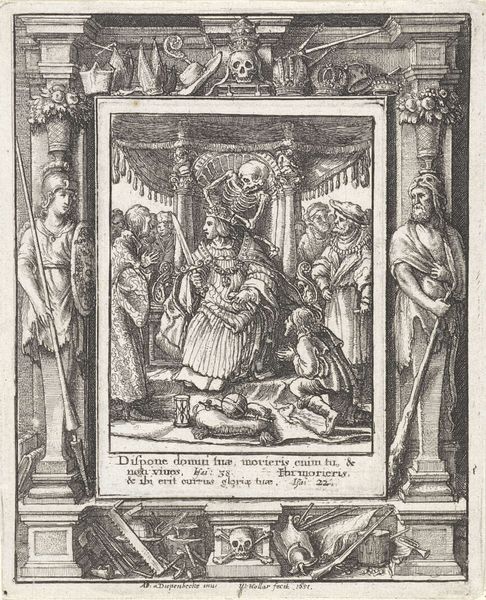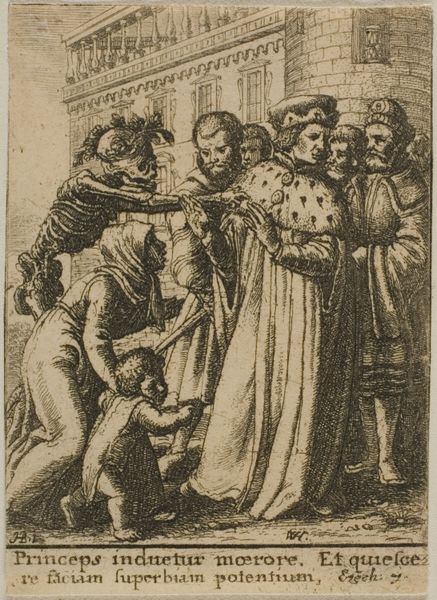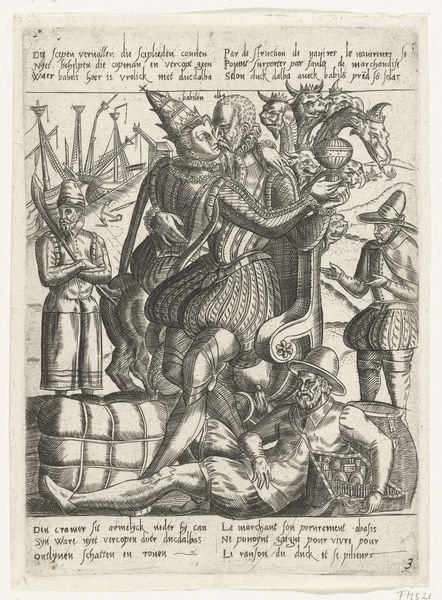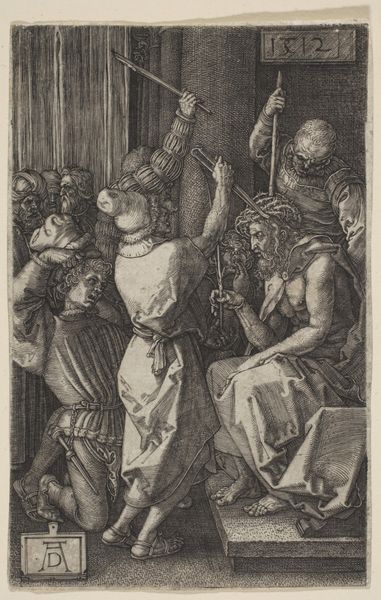
Dimensions: 73 × 50 mm (sheet, trimmed within platemark)
Copyright: Public Domain
Editor: So, here we have Wenceslaus Hollar's 1651 etching, "The Emperor and Death," currently residing at the Art Institute of Chicago. It's a rather small, intricate piece depicting an emperor on his throne with…Death looming above him. It strikes me as intensely morbid, even cautionary. What do you see in this piece? Curator: Beyond the obvious vanitas theme – the skull reminding us of mortality – I see a powerful commentary on power itself. Hollar created this during a period of immense social upheaval, the aftermath of the Thirty Years' War. How might this historical context influence our understanding of the Emperor’s power and authority? Editor: It's interesting to think of it within that context. The war must have really shaken people’s faith in rulers. Seeing the inevitability of death juxtaposed with the Emperor's finery feels like a direct critique of the social hierarchy. Is the artist commenting on the empty promises of those in power? Curator: Precisely. Consider the gaze. Everyone surrounding the Emperor seems more interested in self-preservation than offering comfort. They exist solely in his orbit, their identities contingent on his power, a system which is inherently fragile. What message do you think this sends the viewer? Editor: Maybe it’s a call to dismantle such power structures, a plea to seek meaning beyond titles and material possessions since death comes for everyone, regardless of status. The sand timer reinforces that idea too. Curator: I agree. Hollar doesn't simply present death as an end, but as a leveler. It provokes us to consider the socio-political structures we inhabit and how they contribute to a system where even emperors aren't free from mortality or, perhaps, moral failing. Editor: This has definitely broadened my view. It's more than just a memento mori; it's a powerful statement about accountability and the ephemeral nature of earthly power. Curator: Indeed. It forces us to confront not only our own mortality, but also the mortality of systems and institutions we often take for granted. And to think about what truly matters.
Comments
No comments
Be the first to comment and join the conversation on the ultimate creative platform.













